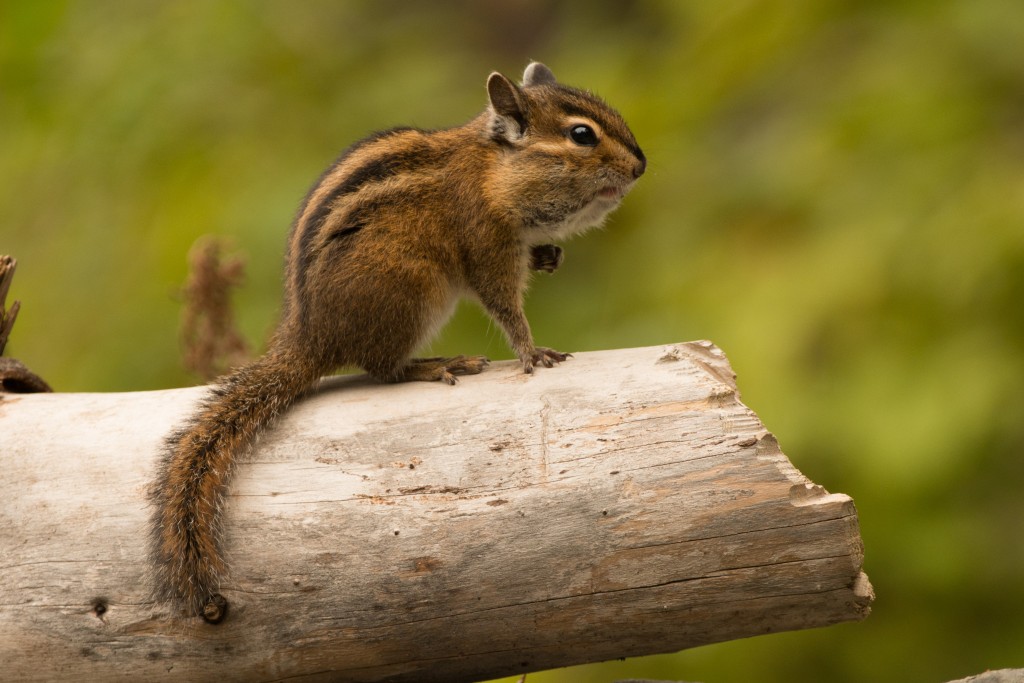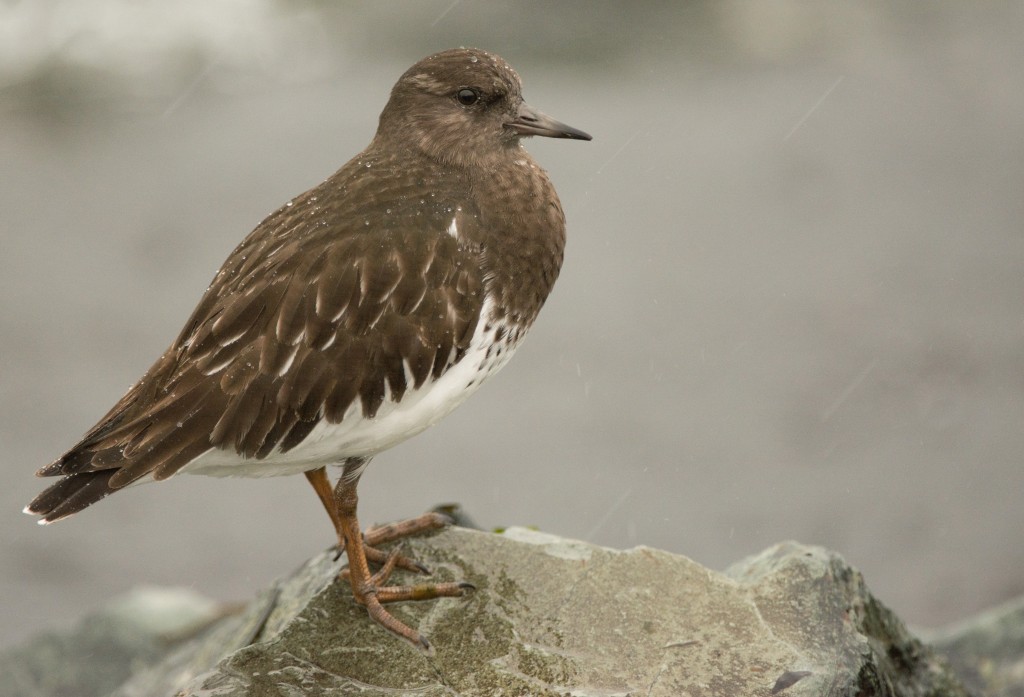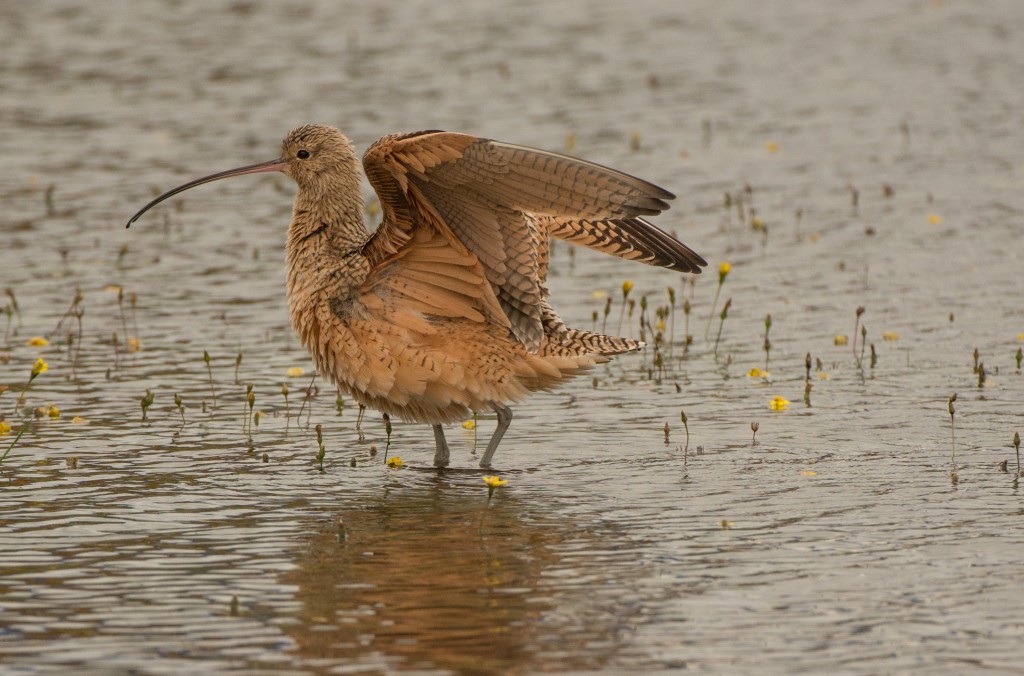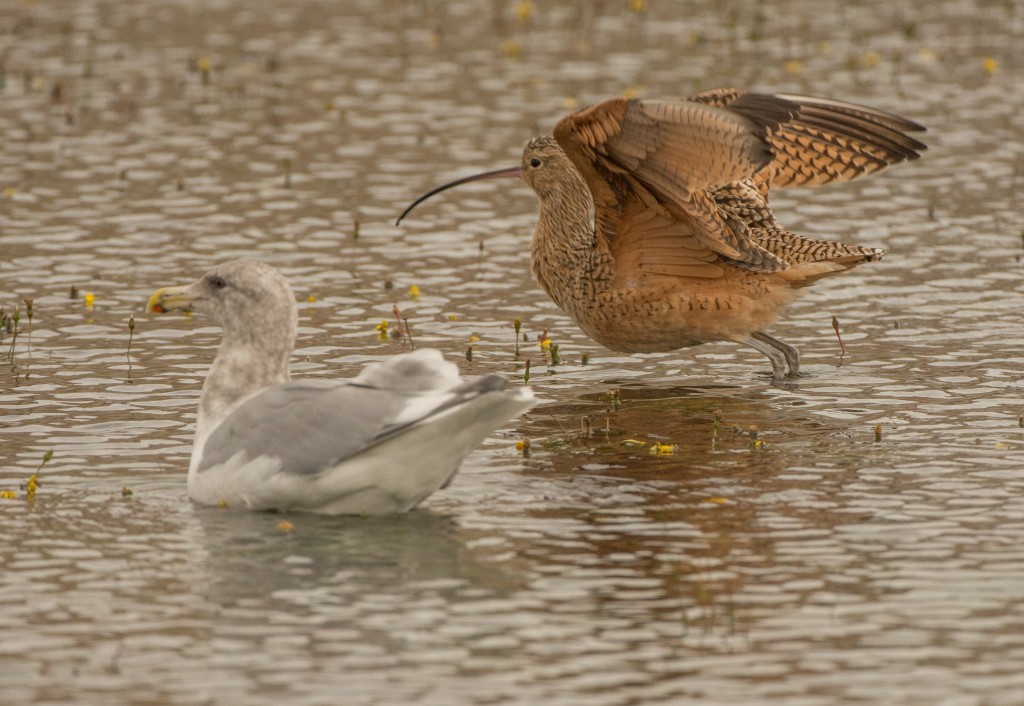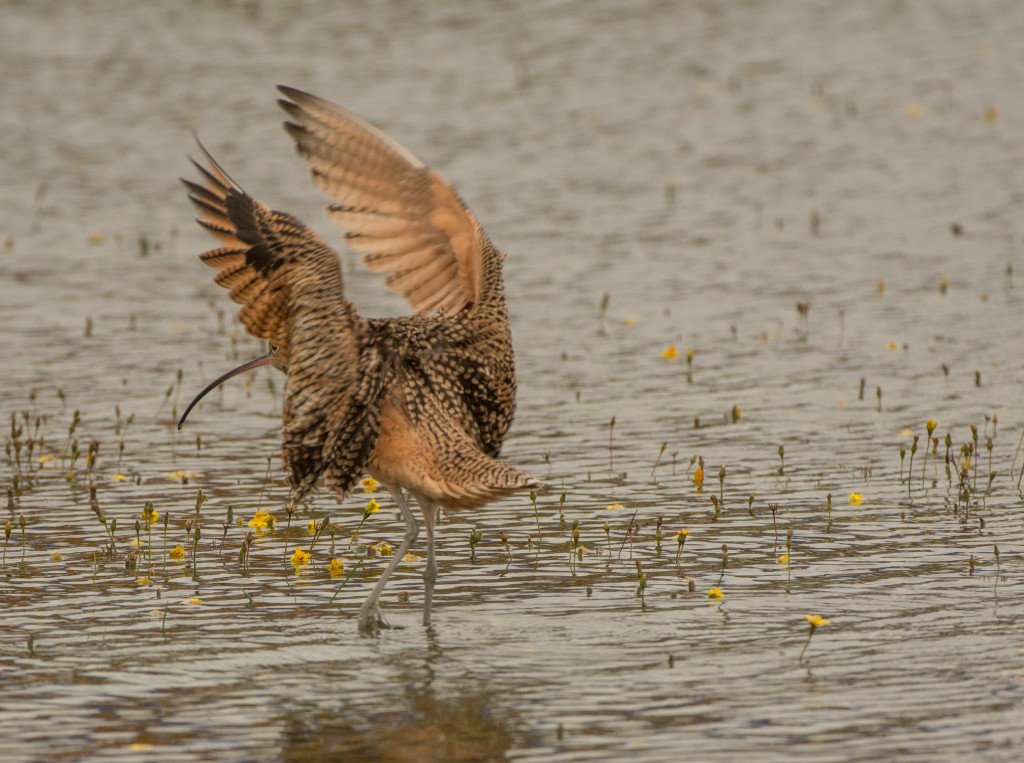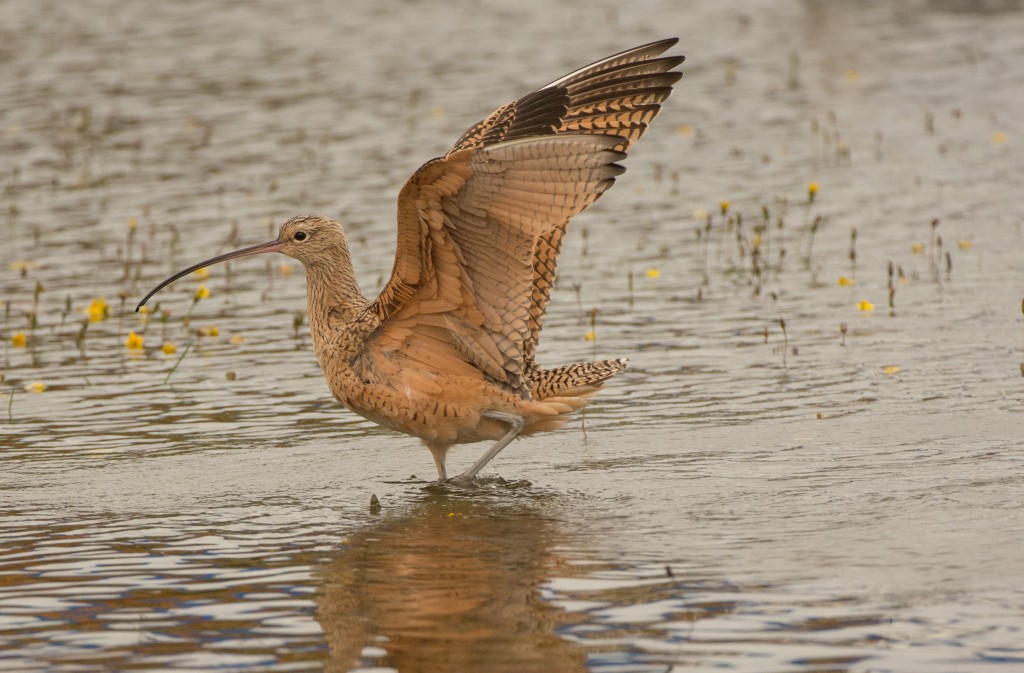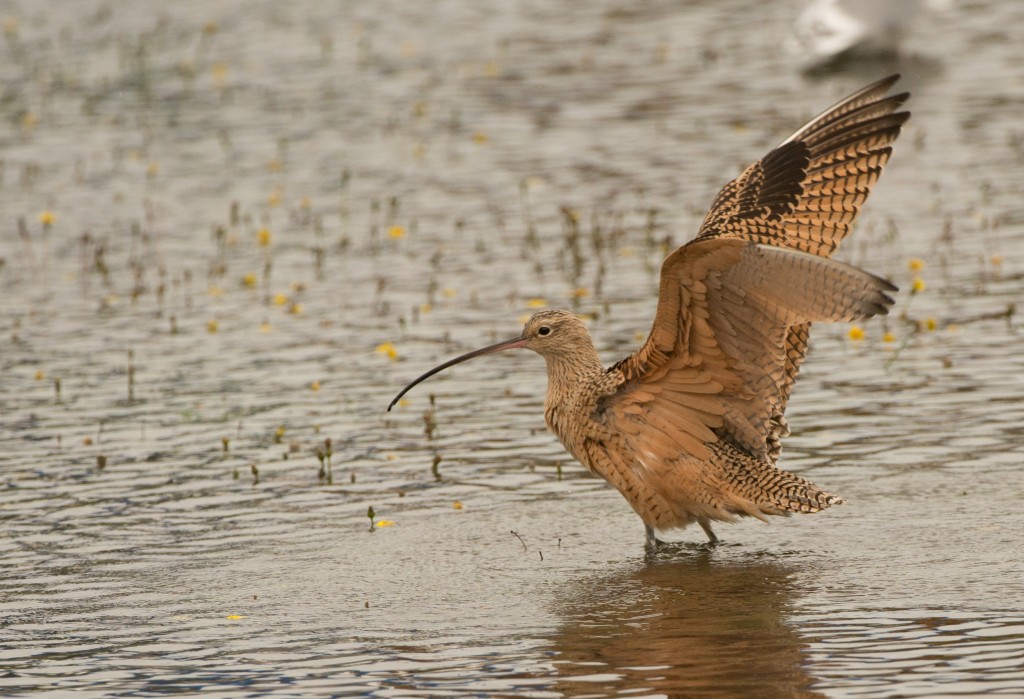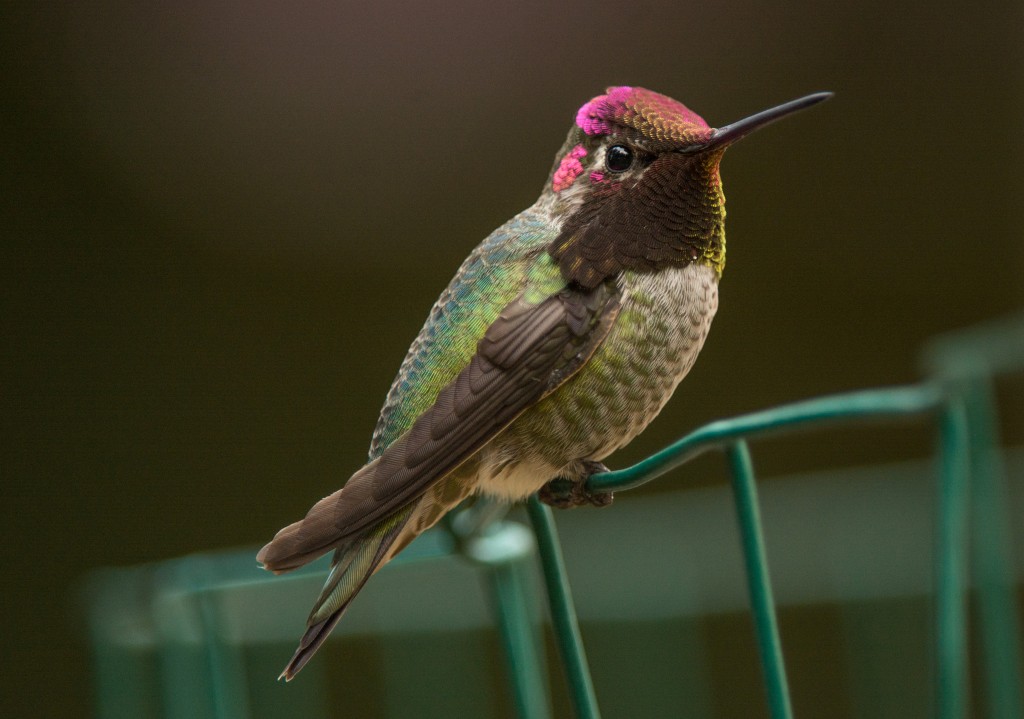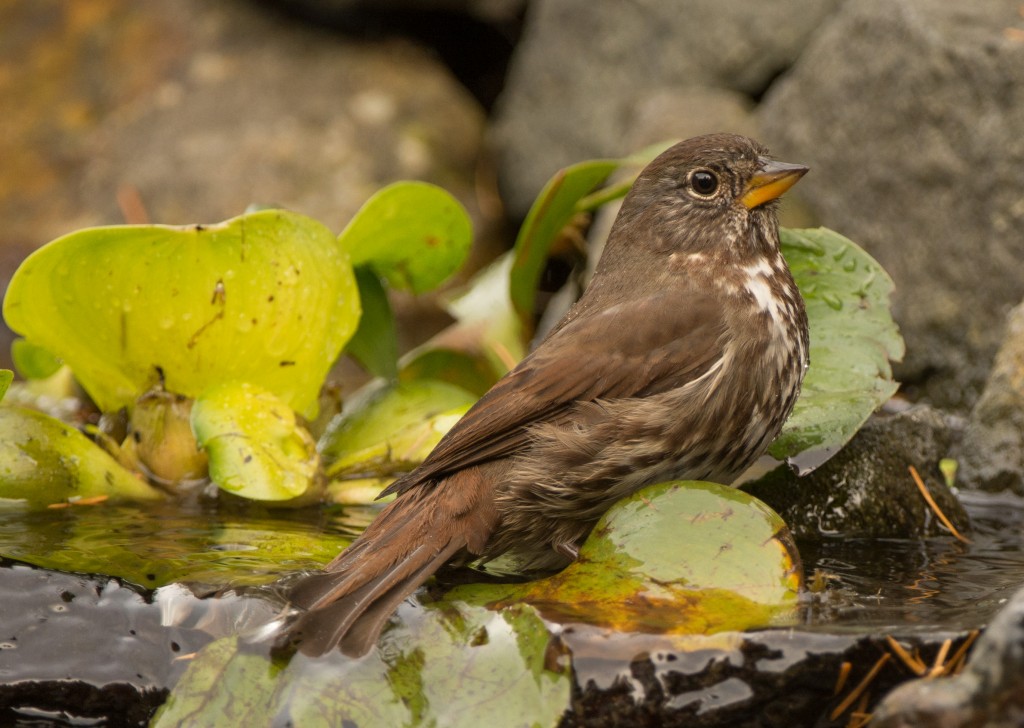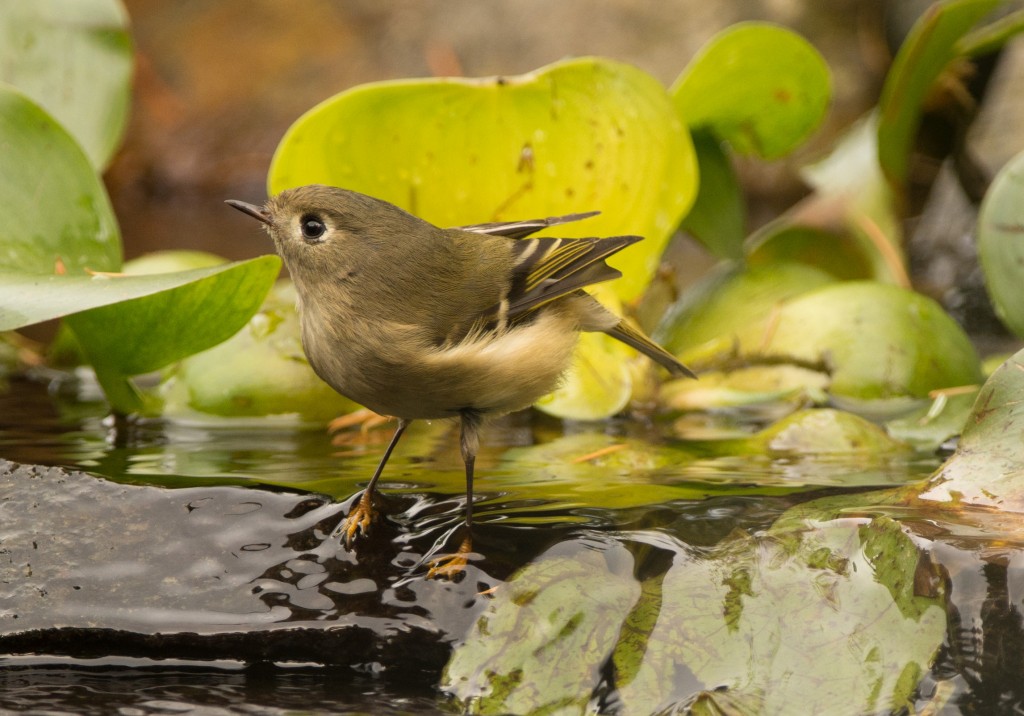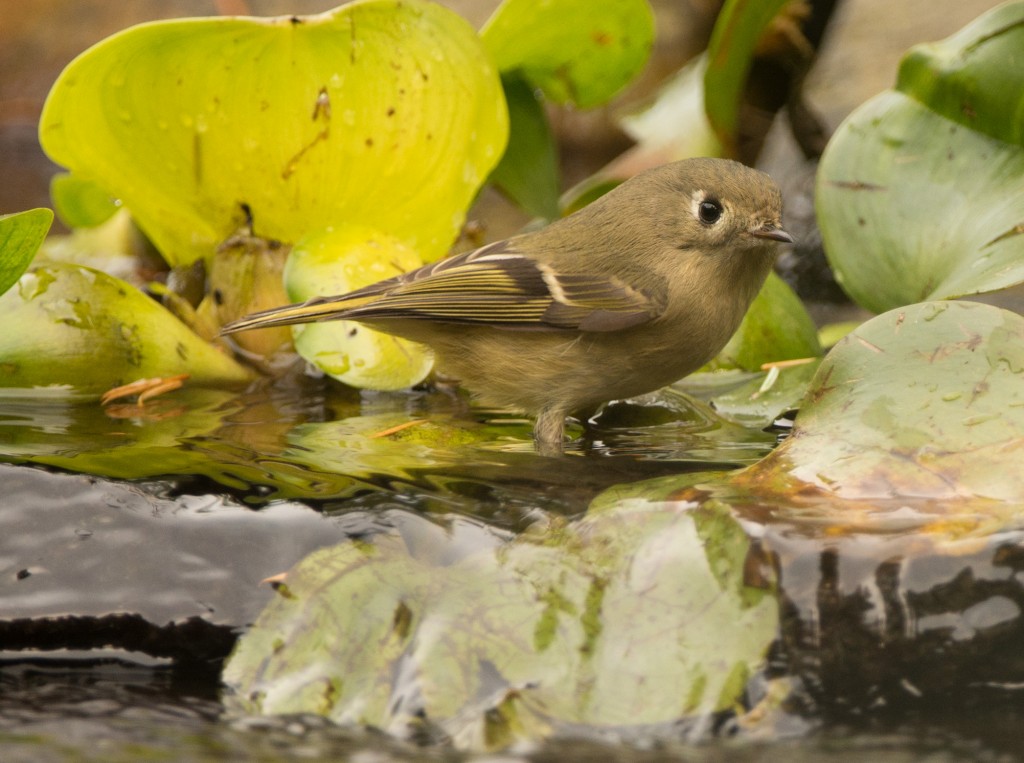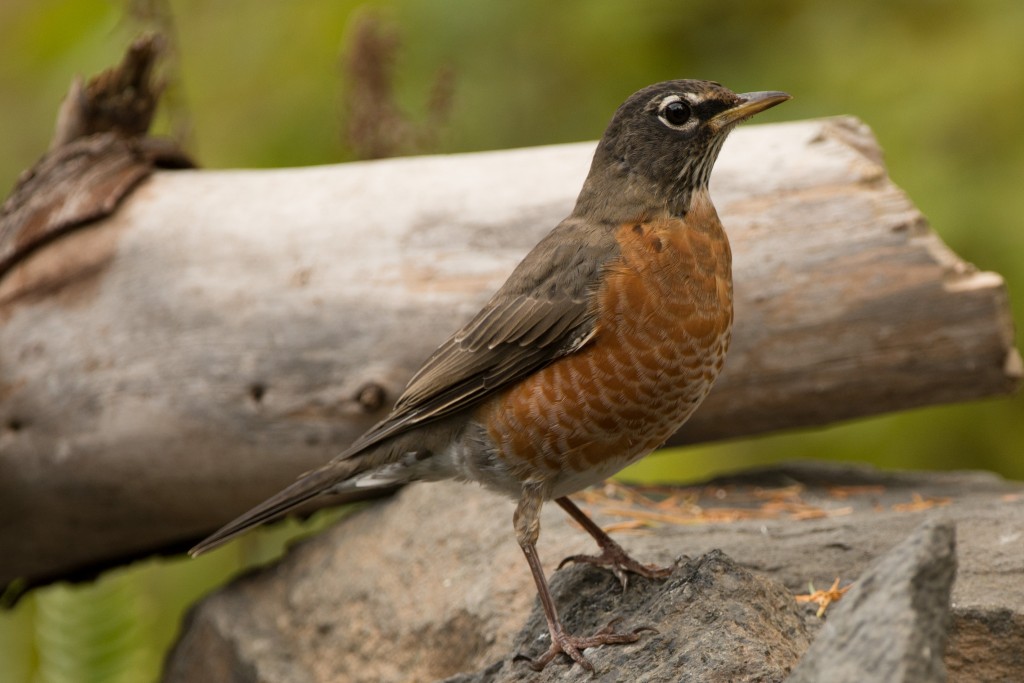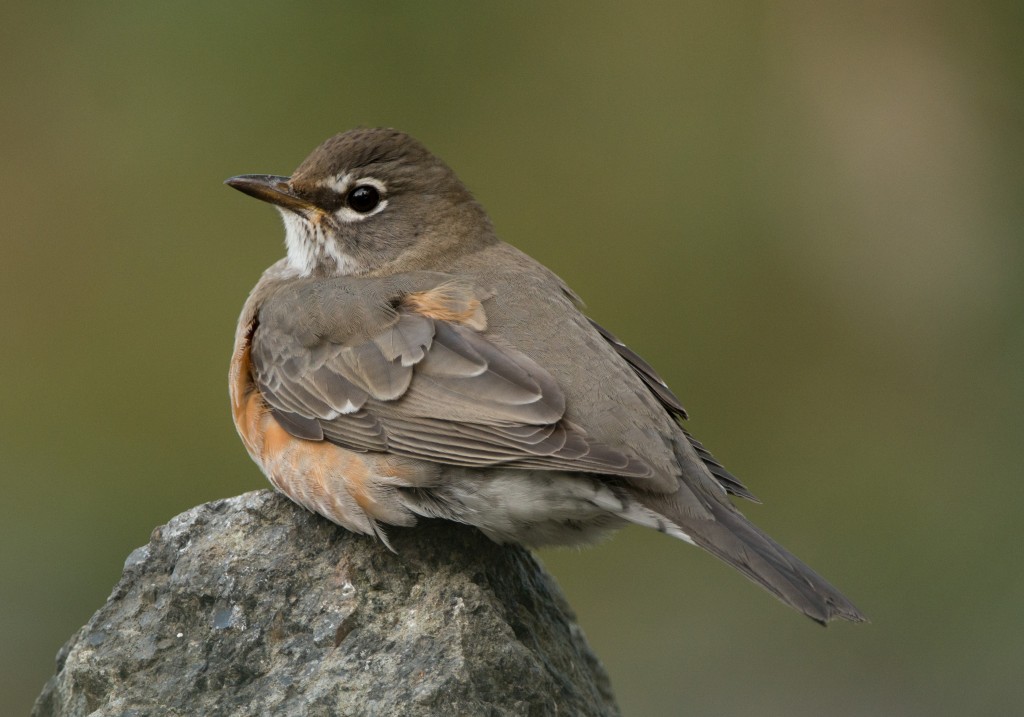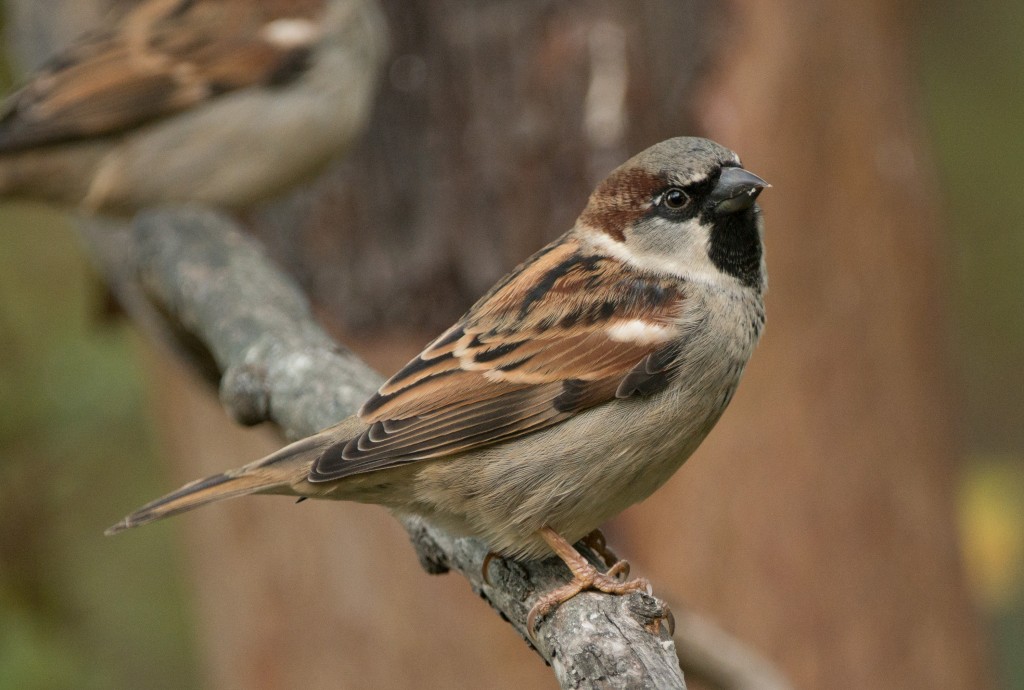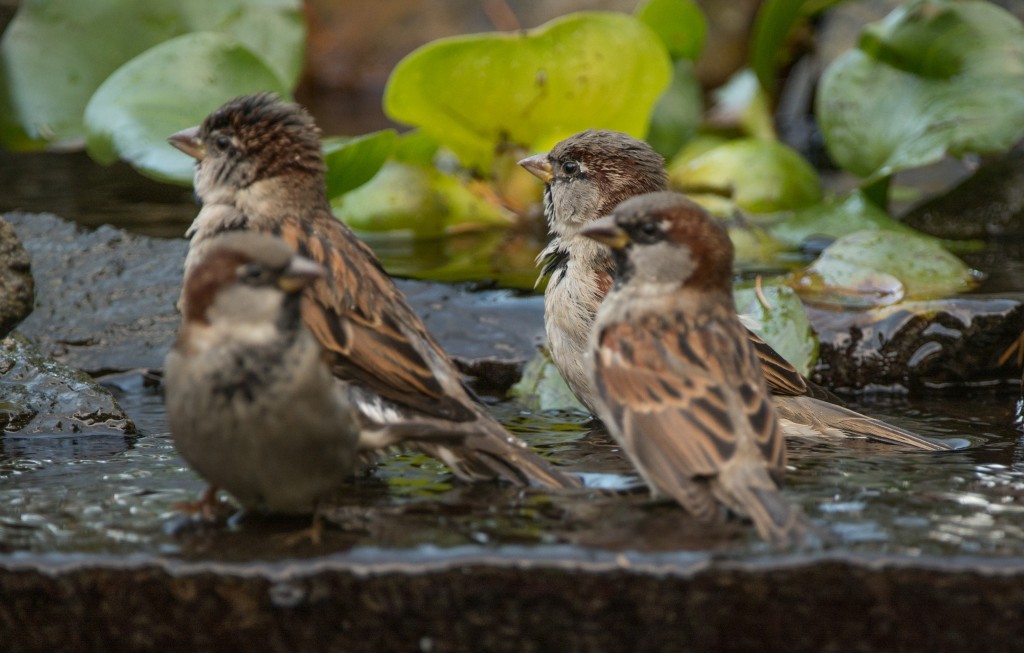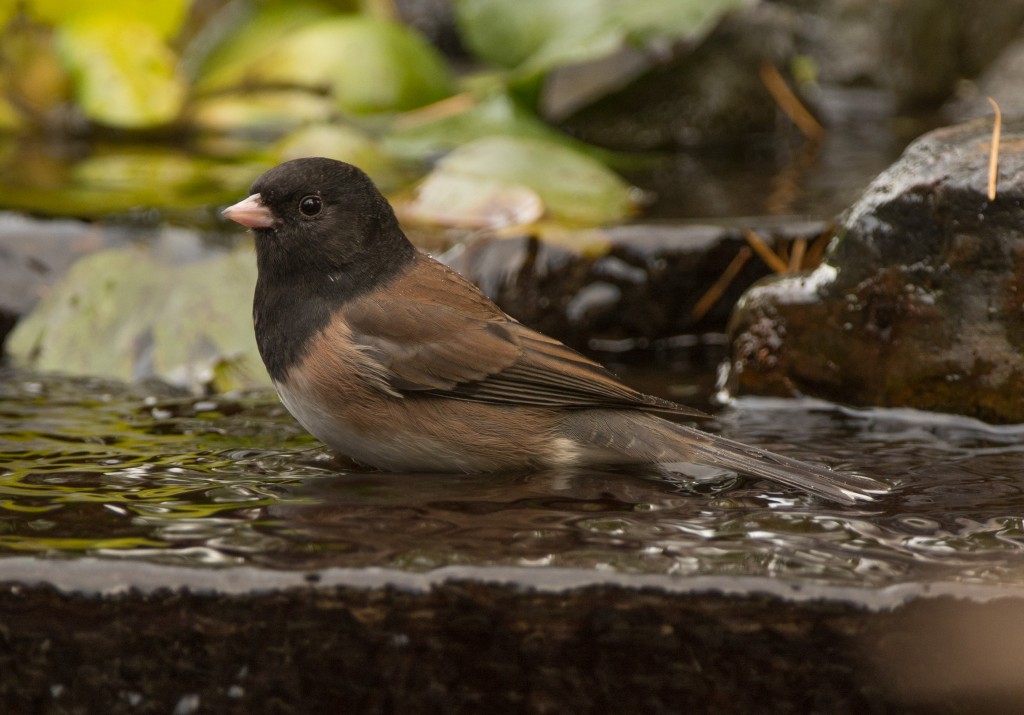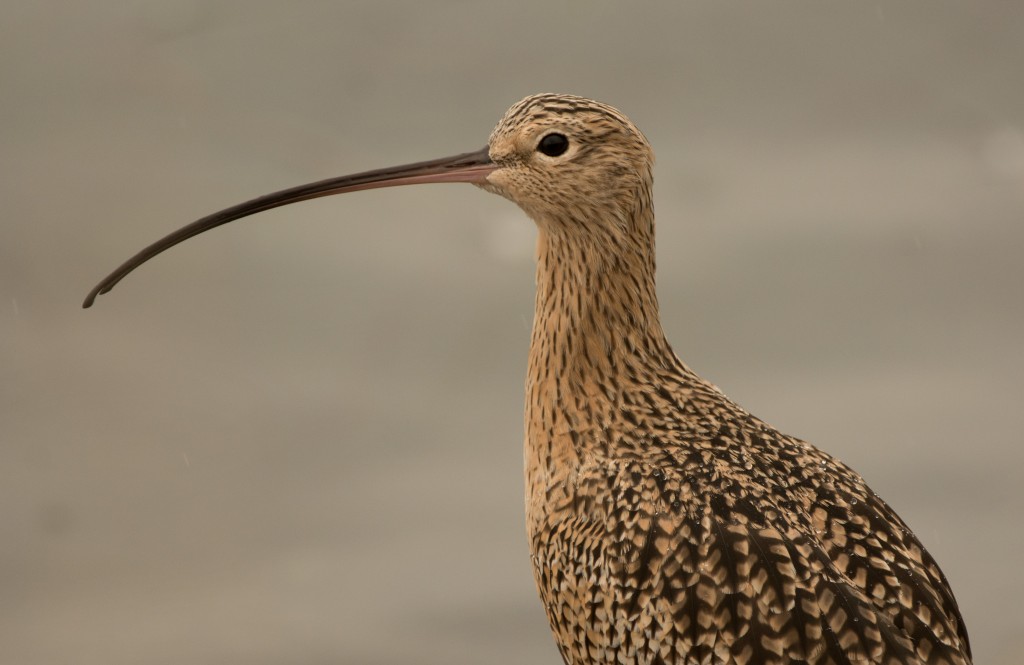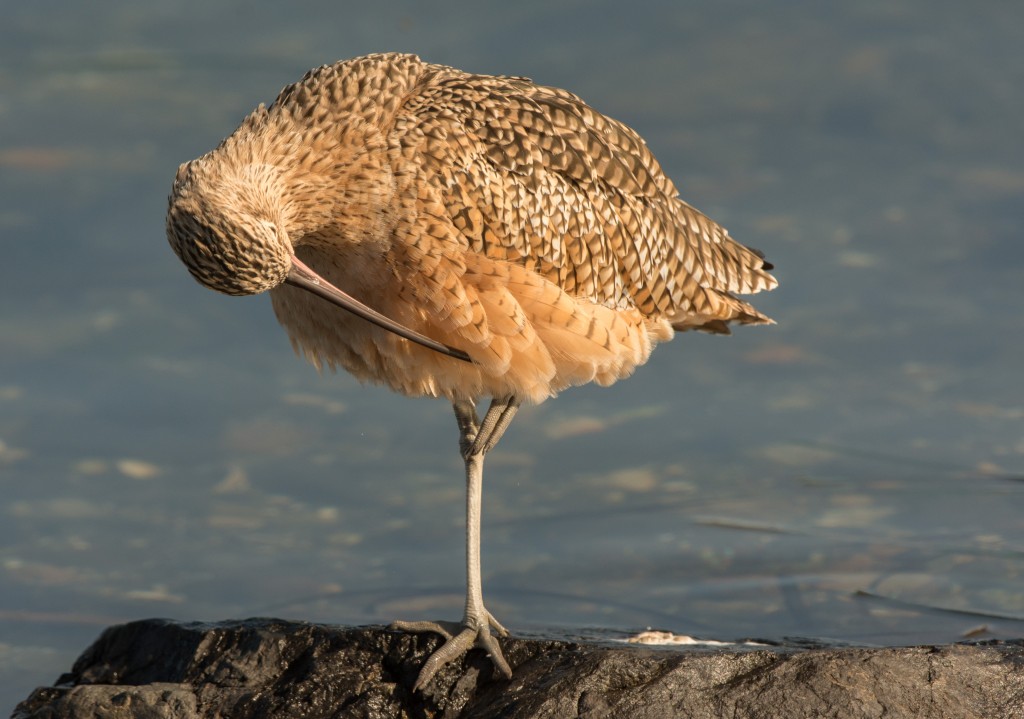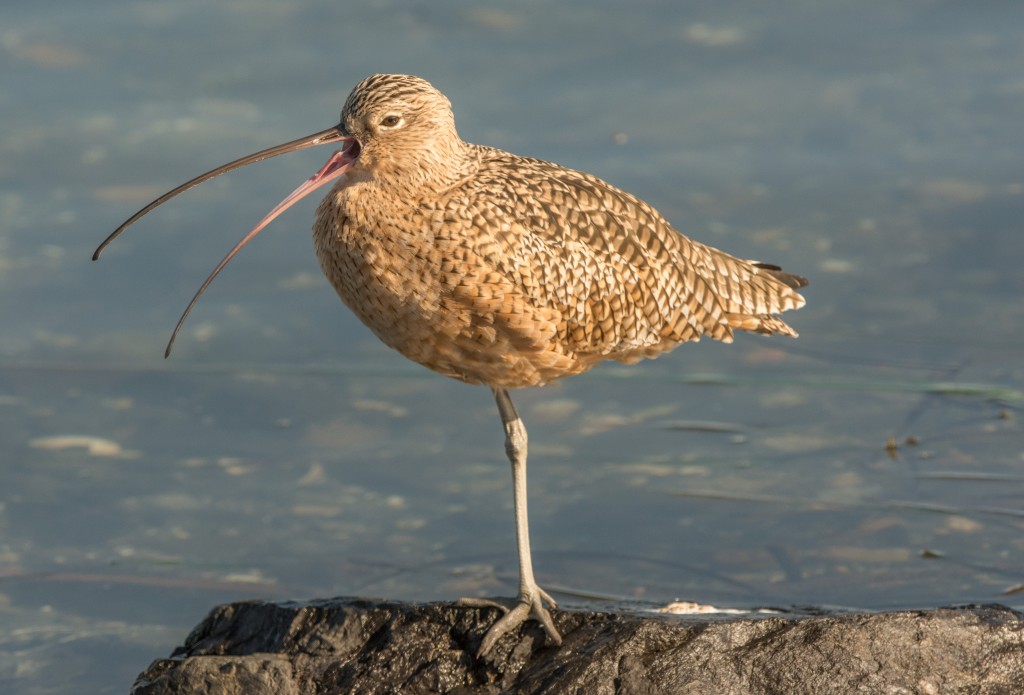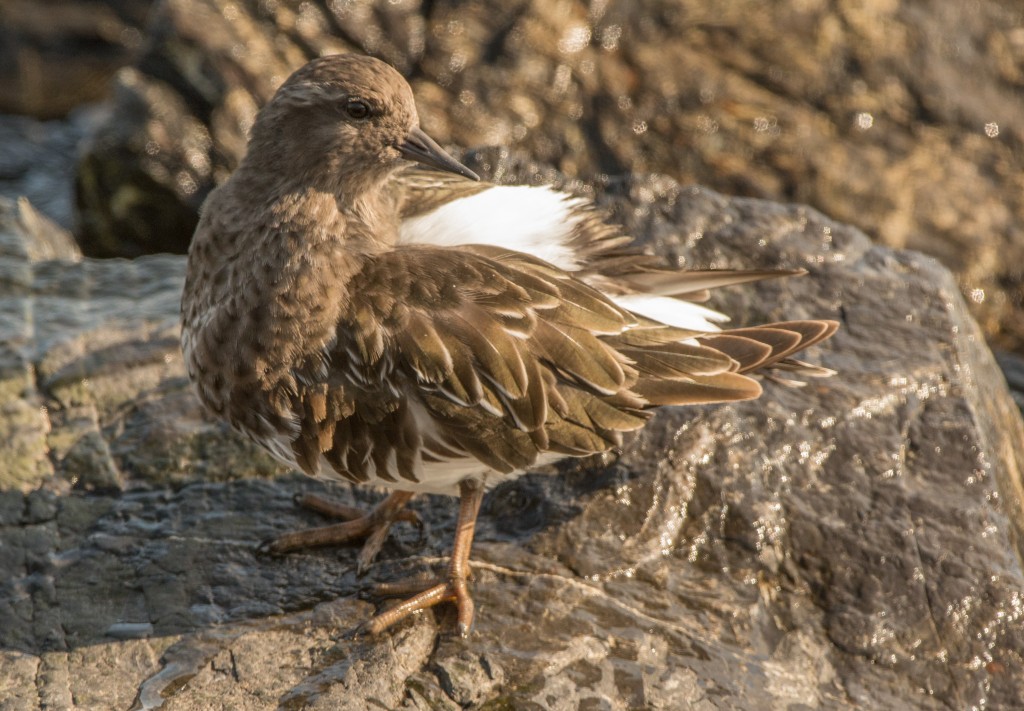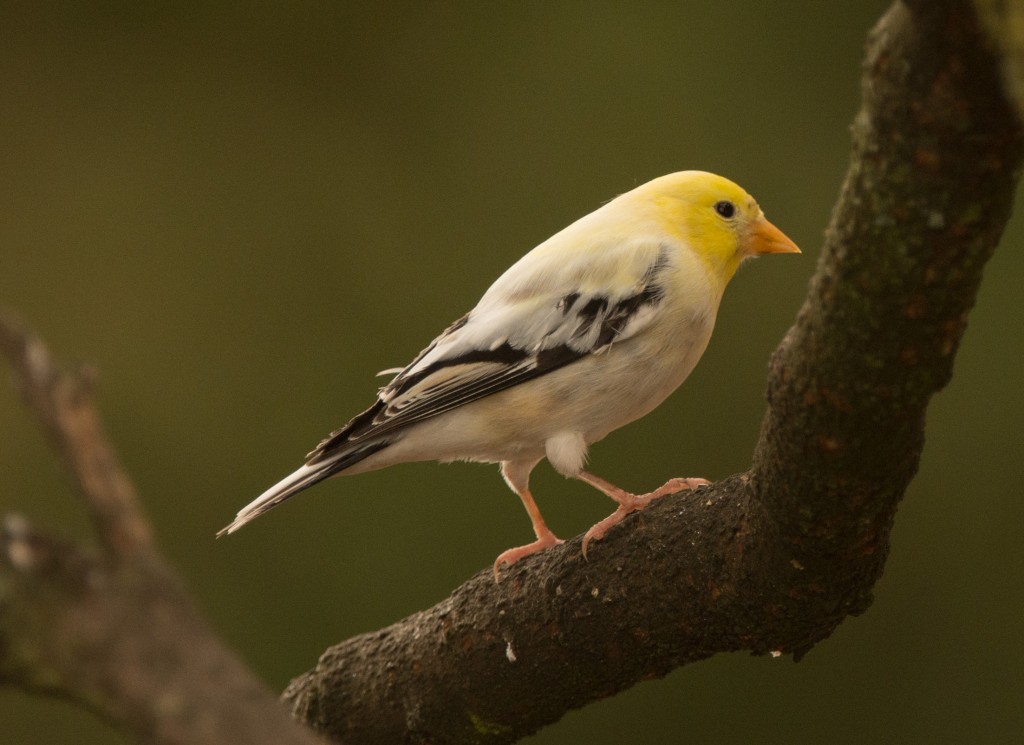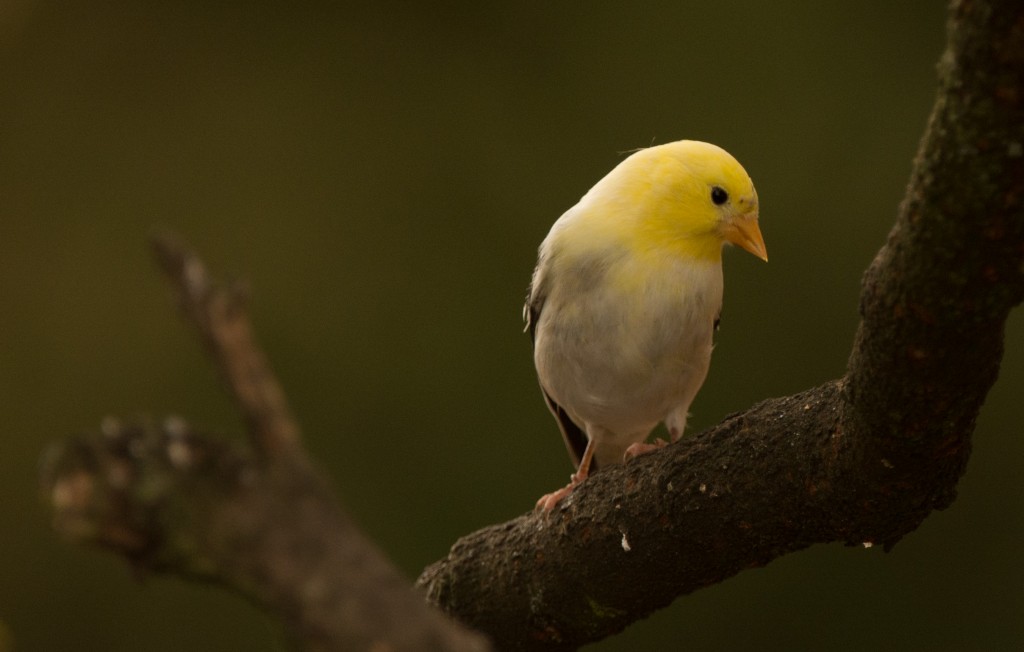I enjoy some of the special birds that visit the yard from time to time and they are the ones that most often end up on my posts. But I fill in between those special visits with the birds that are here day in and day out. They don’t get as much press as our special visitors but they account for the majority of my photos and help fill in between special visitors. So in this post, in part because I had few special visitors yesterday, I’m going to showcase some of our more common visitors which I photographed on Sunday, October 11, 2015. It will be a long list, so fasten your seat belt!
Despite the chickadees’ abundance in the yard, I usually have a difficult time photographing them. Part of this is that they are extremely active and, except when taking food from a feeder to consume while on a limb, offer precious little time for photographs. Another problem is that, despite their numbers, they often fly back and forth between the feeders and some obscure perch in the woods where they hammer a seed to manageable pieces. (It’s a mystery to me why these birds can’t consume even part of a hulled sunflower seed in one swallow!) I was quite happy with obtaining several photos of this Chestnut-backed chickadee that descended to the watercourse for a bath.
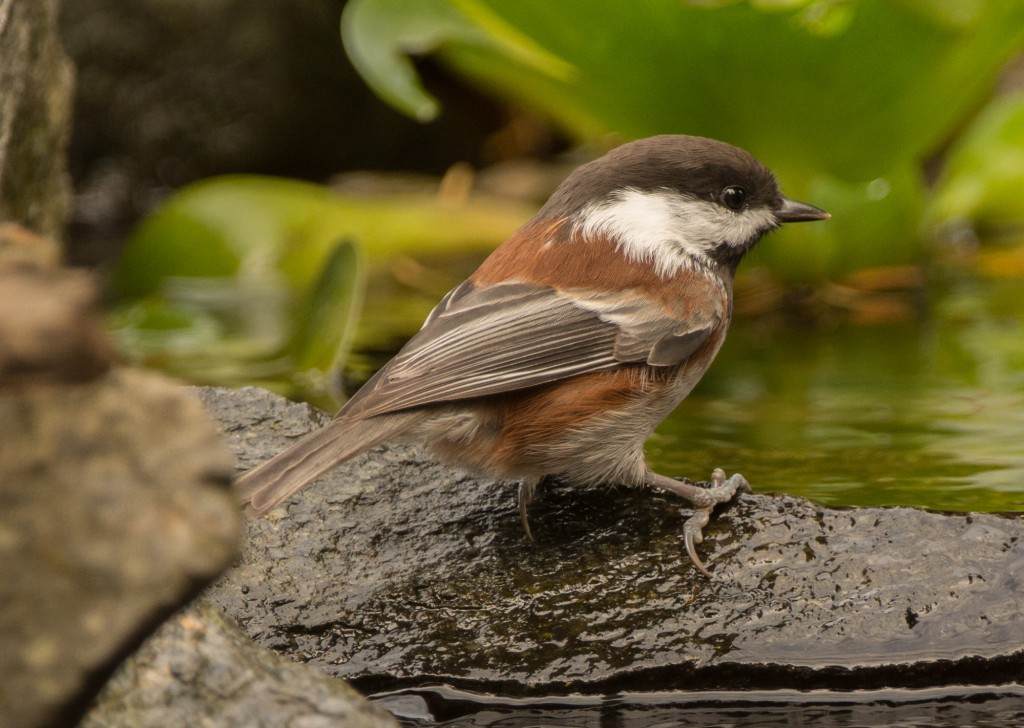
While I’m mentioning volume, here are photos of a couple of Dark-eyed juncos of the Oregon race. In another month or so we will have as many as thirty or so in the yard, and unless we have a major influx of Pine siskins, the juncos will be our most numerous yard birds for the duration of the winter. In the spring most of them will leave for the higher elevations where they will breed.
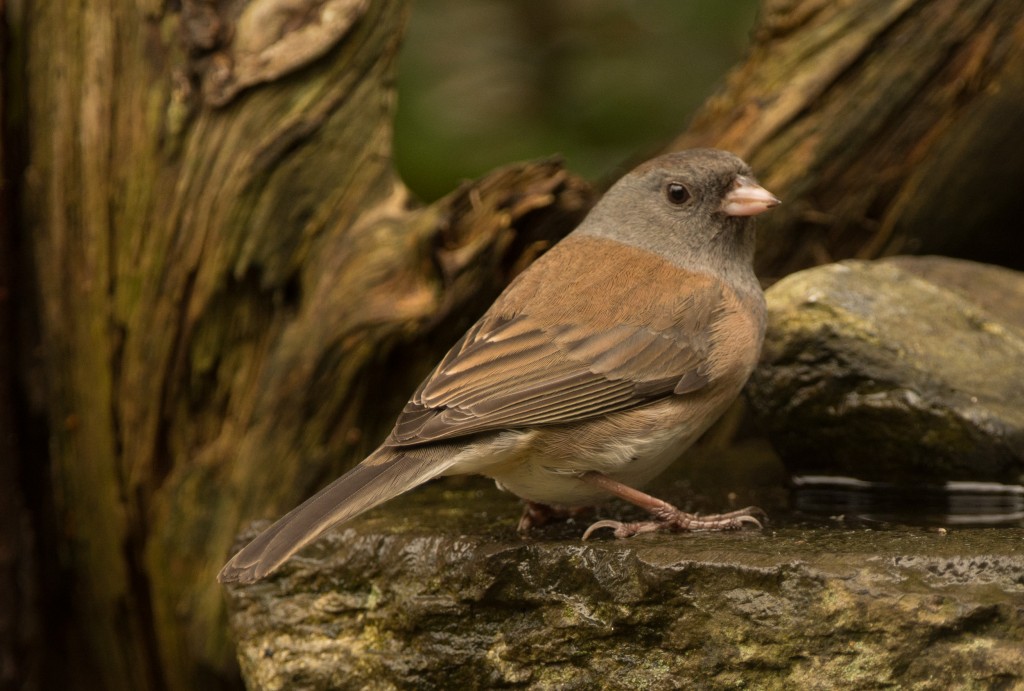
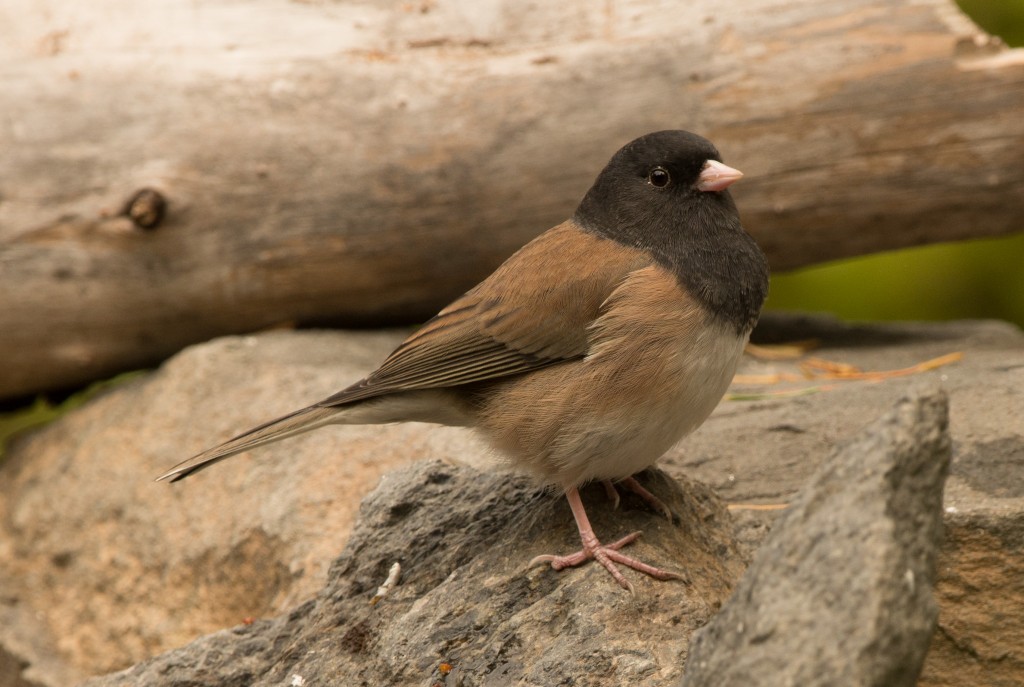
Another common yard bird is the House sparrow, of which we probably have a dozen or more. I would rather we didn’t have them (in part due to their gregariousness) but we have to put up with them. However they can make a good subject for portraits. This first bird is a male preparing to take a bath.
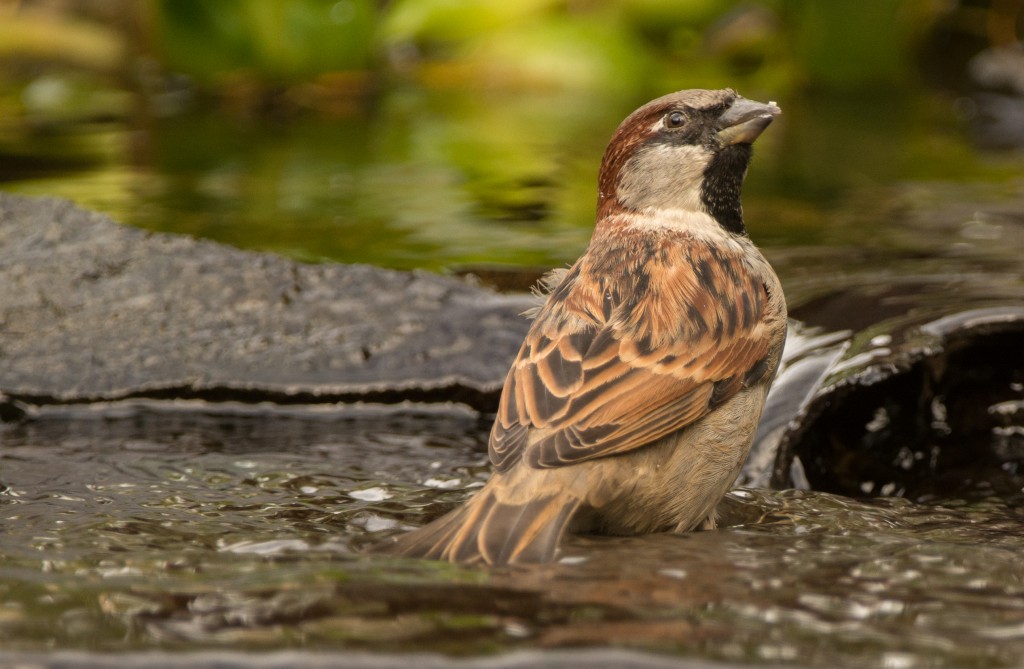 I was lucky to be able to photograph this female House sparrow eating a single coral berry less than ten feet from me. The sparrow worked her way up in the bush until she could reach the berry, and it was that movement that caught my attention. The berry clung to the bush so the sparrow ate a little of it at a time.
I was lucky to be able to photograph this female House sparrow eating a single coral berry less than ten feet from me. The sparrow worked her way up in the bush until she could reach the berry, and it was that movement that caught my attention. The berry clung to the bush so the sparrow ate a little of it at a time.
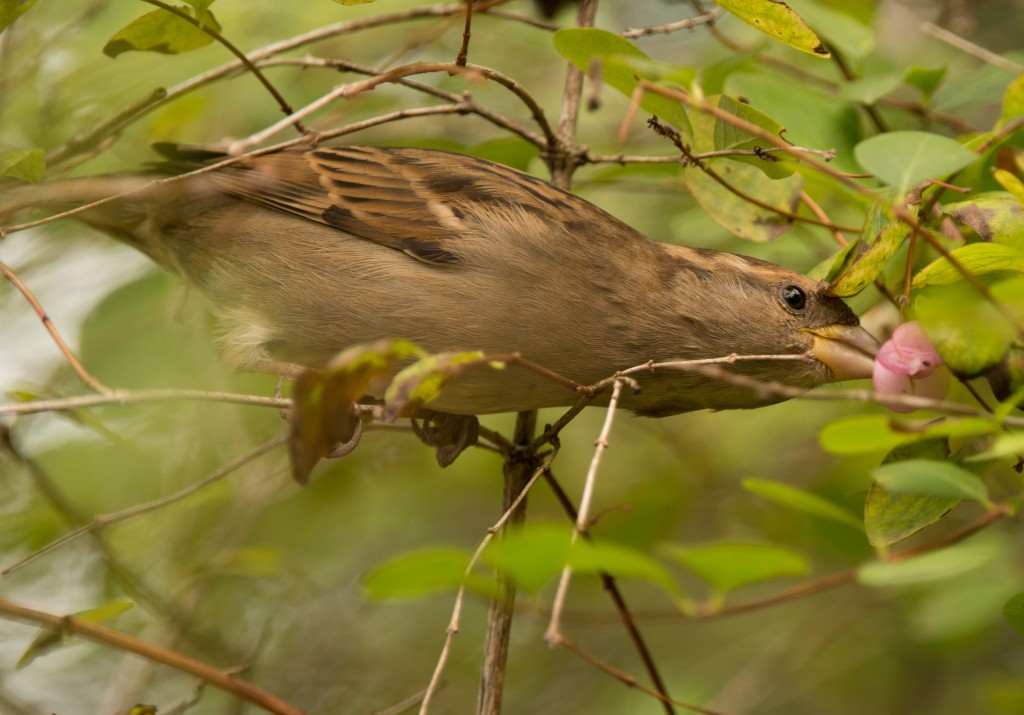
I occasionally take, but usually don’t post, photos of birds at some of the bird feeders. On this day I had male (which appears first) and female Anna’s hummingbirds which came to the smaller feeder we use in the winter. The background, only several inches from the feeder, is a window… which appears black in the photo. I thought the effect was interesting and so included the photos here.
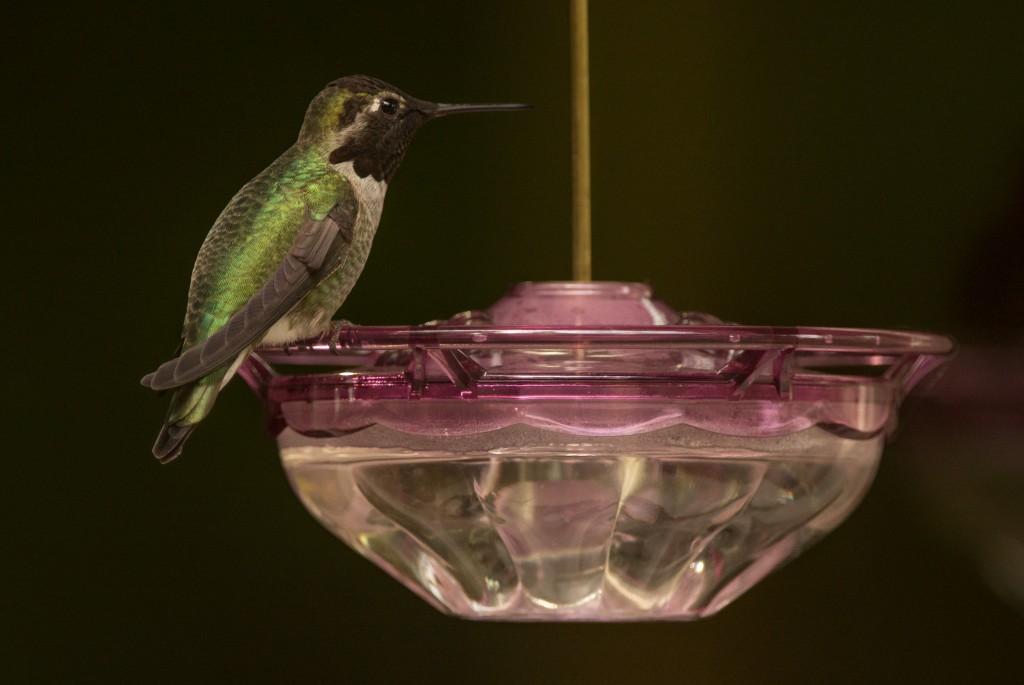
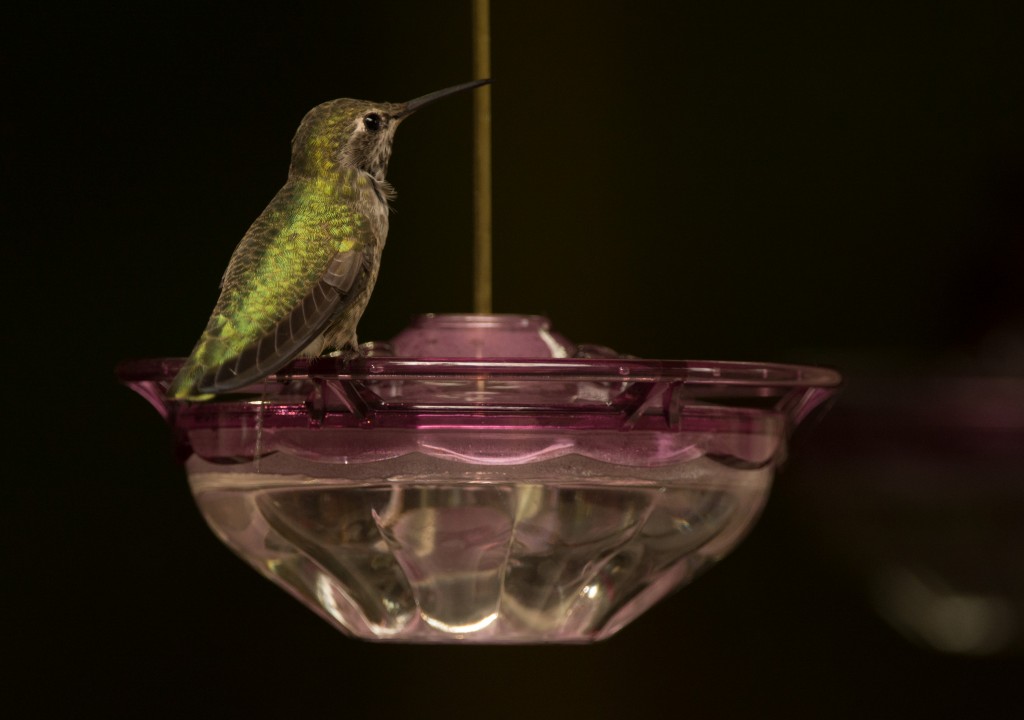
Other common visitors are the House finches, in this case a female.
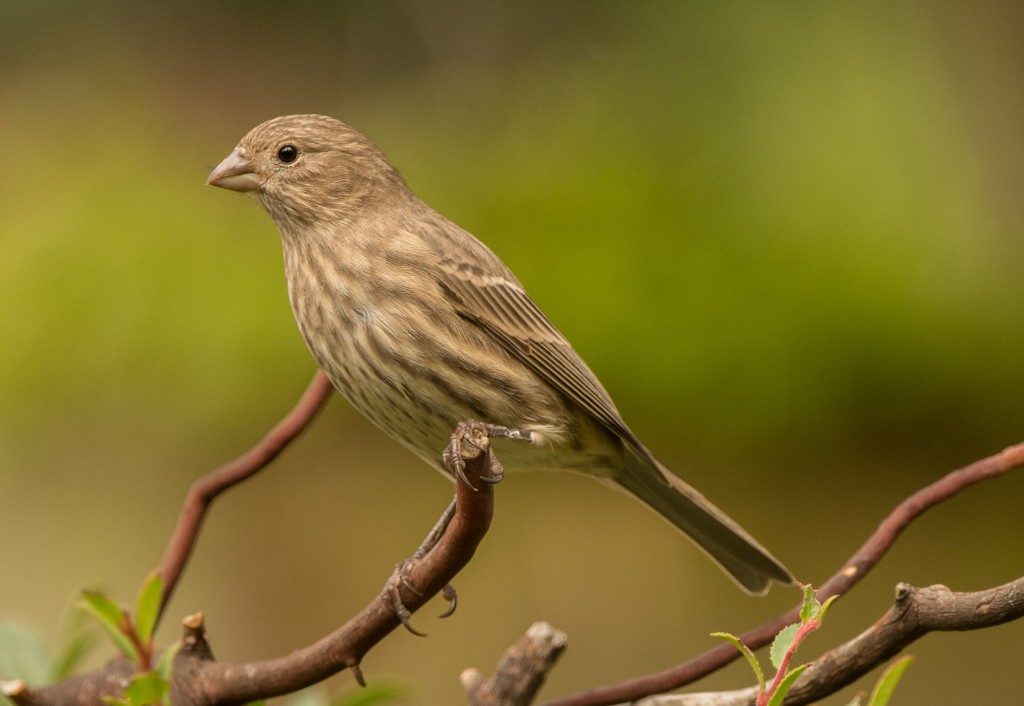
We have a variety of sparrows. In addition to the House sparrows pictured above, we will have a few Song sparrows (pictured first) and Golden-crowned sparrows (pictured second) that will over-winter in the yard. In addition to these sparrows, I observed an adult White-crowned sparrow yesterday… somewhat of a yard rarity at this time of year.
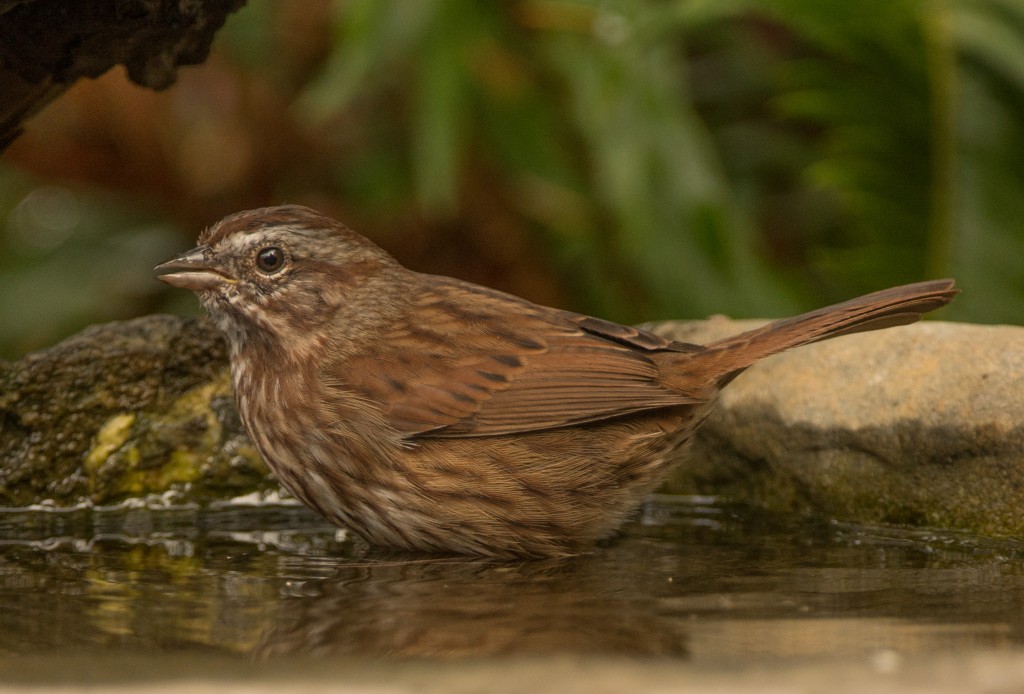
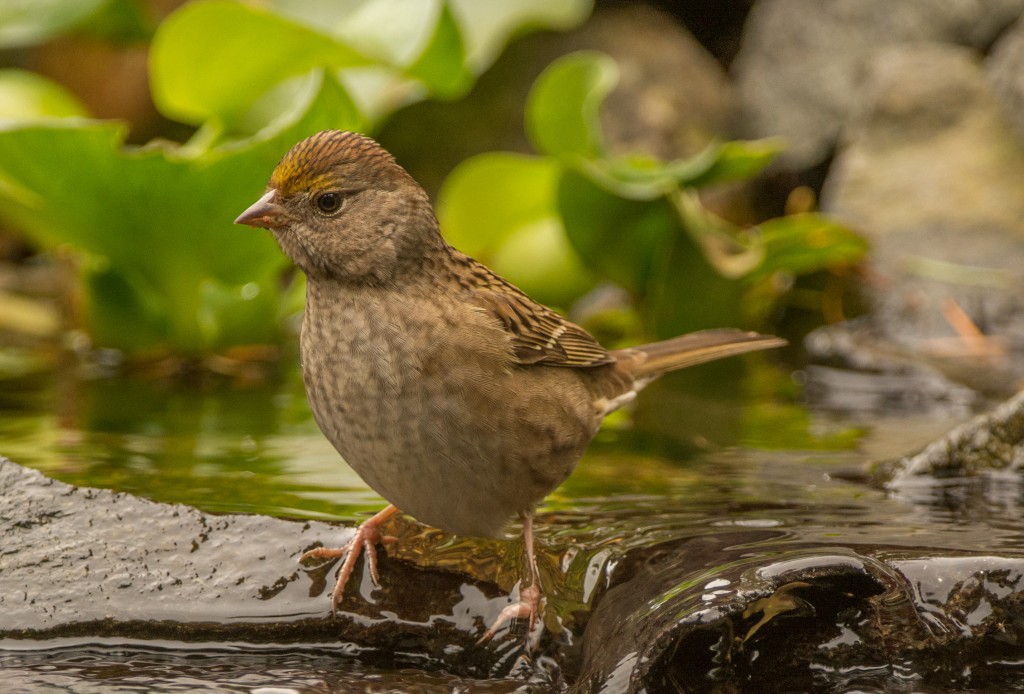
We had two or three coveys of California quail in the neighborhood this year, after neither hearing or seeing any last spring or summer. This is a sad progression… the coveys start out with a pair of adults with 10-12 chicks and the chicks get whittled down on an almost daily basis. If a pair raises two to three chicks to adulthood it must be considered a successful breeding season. Strangely the quail seem to disappear for the entire winter… every year.
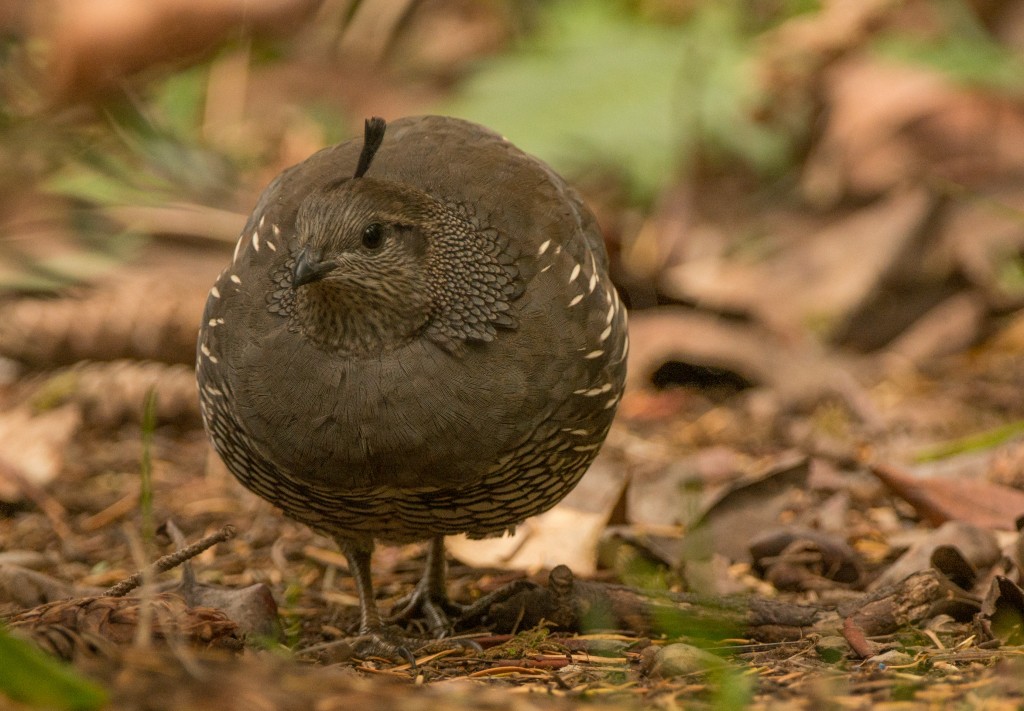
And after grousing (I believe in my last post) about how difficult it was to photograph the Brown creepers, I had one come to the bird bath and wait patiently on a stump while another bird bathed. It was a rare opportunity to obtain good photos of one and I took full advantage of the situation. If you look closely you can see the fine detail in the feathers, but looking at the bird’s back in general makes my eyes blur!
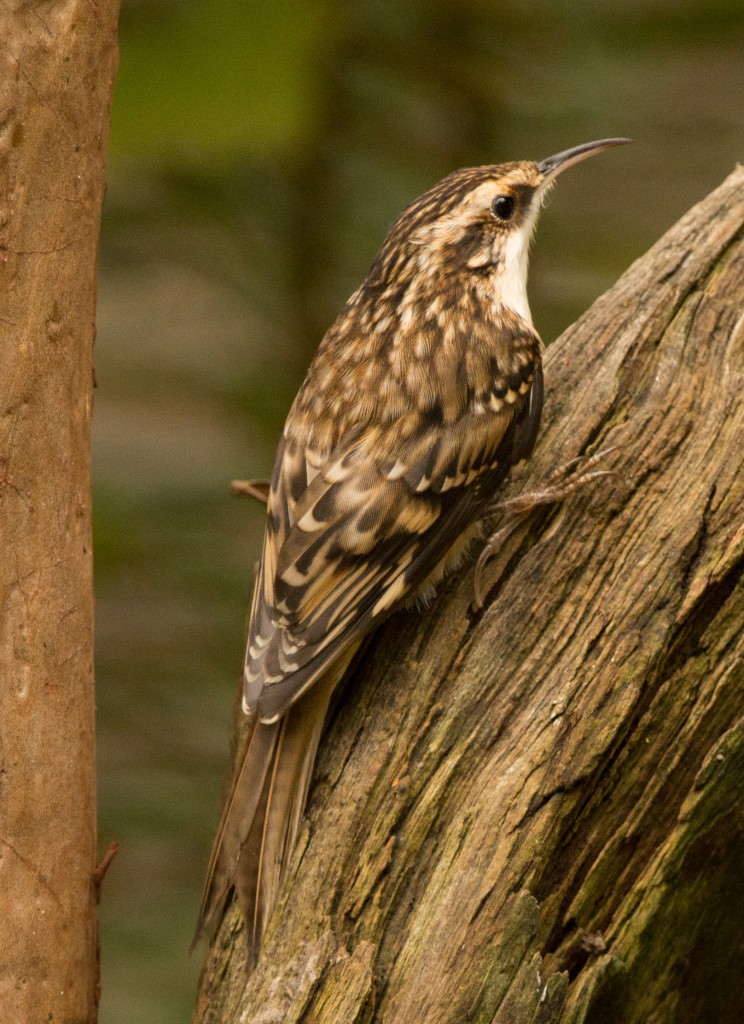
And since we consider our yard a wildlife sanctuary, I don’t want to slight one of our non-avian friends… a Townsend’s chipmunk. It’s been hanging around the yard now for several months and on rare occasions even brings a friend. It seems to have changed its living quarters several times but keeps making trips back to the yard for food. Does it appear that it has any food in this photo?
